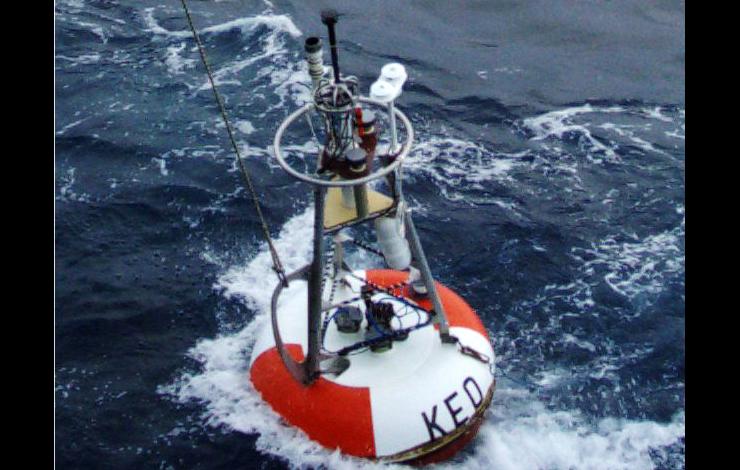On Sunday November 6, 2005 at approximately 1500 UTC, a NOAA/PMEL moored buoy known as the Kuroshio Extension Observatory (KEO) broke away from its anchor and began drifting southeastward at 0.5 knots. The KEO buoy, moored in 6 km of water in the Kuroshio Extension recirculation gyre, 300 miles offshore of Japan, carries a full suite of meteorological and subsurface sensors, as well as sensors to monitor the carbon dioxide uptake by the ocean. Each day, daily averages of all surface measurements and most subsurface measurements are telemetered by satellite to PMEL via Service ARGOS. In addition to the daily-averages, 8-13 times per day surface meteorological samples and buoy positions are transmitted. Thus, PMEL scientists were aware of a problem within hours of the break and took action to assess the situation and to apprise Japanese colleagues and investigate the possibility of a rescue operation. As luck would have it, Dr. Hiroshi Ichikawa, from the Japan Agency for Marine-Earth Science and Technology (JAMSTEC) had just left port aboard the R/V Kaiyo to do work in the Shikoku Basin. Dr. Ichikawa, JAMSTEC’s group leader for the Kuroshio Transport and Surface Flux group, immediately made arrangements to revise his cruise plan and within hours was heading full-steam towards the drifting buoy. Two days later, the mooring was successfully recovered.
The KEO buoy is an element of the Global Earth Observation System of Systems (GEOSS), which has been signed by nearly 60 nations. The data transmitted from this site are publicly available and are used by scientists worldwide. Its loss is an unfortunate hazard of working in severe conditions in the remote open ocean. But thanks to the fast action by JAMSTEC and the fact that the break occurred below the deepest sensor, all of the equipment was recovered in good condition and the high resolution data stored by the buoy were saved. The KEO rescue is greatly appreciated and a tribute to the long history of collaboration between JAMSTEC and NOAA.



